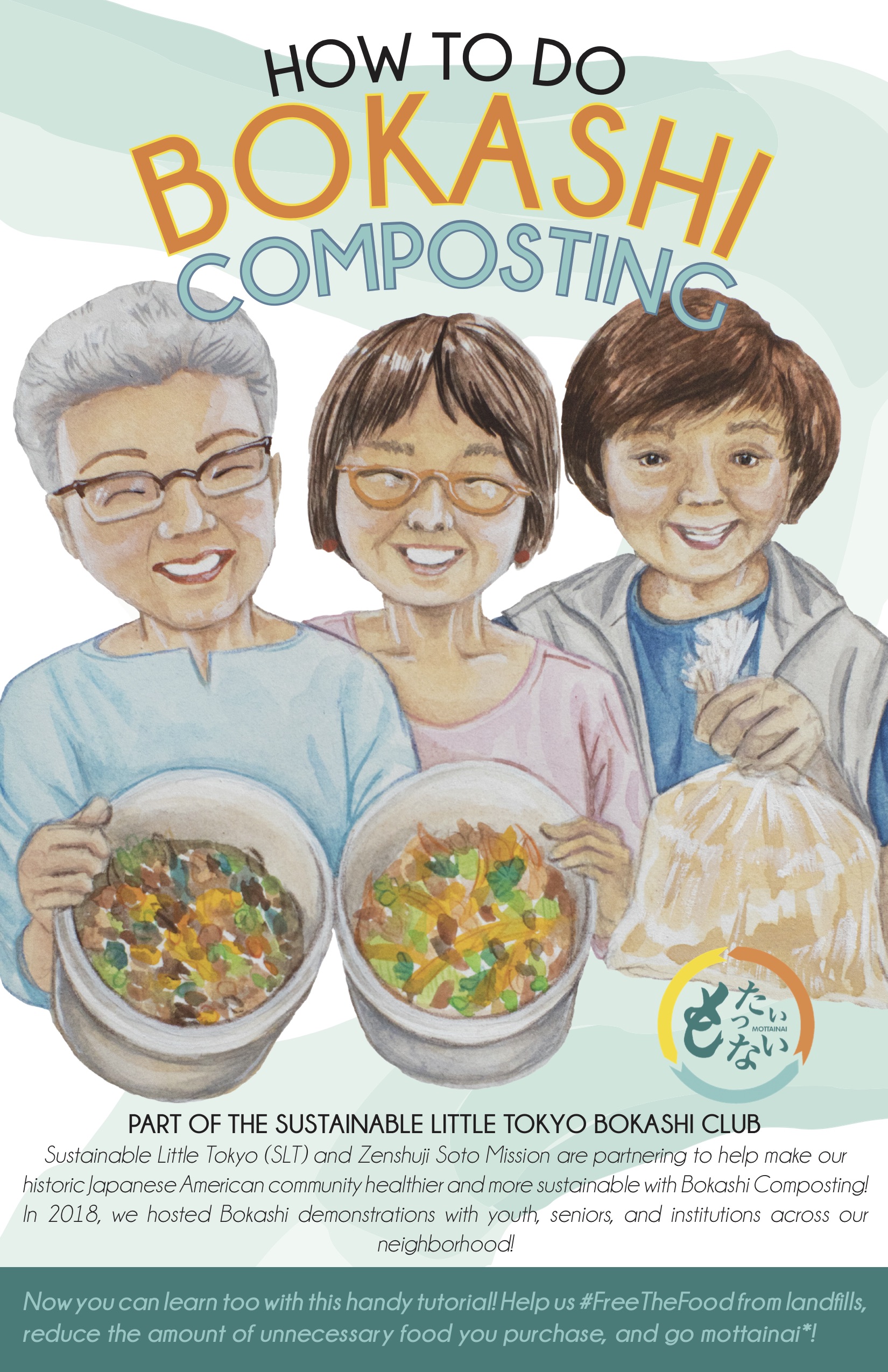How to Do Bokashi Composting

A free How to Bokashi Compost zine designed by local Japanese American artist Sara Montgomery! Funded in part by the LA Food Waste Challenge Grant.
What is Bokashi?
Bokashi is bran that is inoculated with three strains of microorganisms.
- Yeasts (Saccharomyces spp.)
- Lactic acid producing bacteria (Lactobacillus spp.)
- Phototrophic bacteria (Rhodopseudomonas spp.)
After two weeks, infused inoculated bran can be dried and is ready for use.
What is Bokashi Composting?
Bokashi composting is an anaerobic process that uses the special additive to ferment your food waste—including meat and dairy—into a healthy nutrient rich soil. It’s easy, quick, and doesn’t smell! This method uses a mix of microorganisms to decrease smell, increase the speed of decomposition, and support the growth and health of all plants and trees.
What Do I Need?
- 2 nesting containers and 1 tight-fitting lid. Drill holes in the bottom of one container. Place container into the 2nd container to allow fluids to drain. Place tight fitting lid onto the 2nd container.
- Food waste, including kitchen waste (plant, dairy and meat) and leftover foods. Does NOT include teabags, tobacco filters, plastic wraps, Styrofoam, plastics or foils.
- Prepared Bokashi, dried or in an open container/paper bag to aerate. Bokashi can be purchased in stores, made at home, or made as a community! Join our Bokashi Club (see above for more information)!
Composting with Bokashi
- Put the food waste into an airtight bucket. Cut up big pieces of food waste
- Sprinkle the Bokashi on top, mix, and firmly press. If it smells, generously add more Bokashi.
- Place the lid on firmly and airtight.
Repeat the steps 1–3 until the bucket is full - Put the full bucket under the sink or in a dark storage area for 1-2 weeks. If the lid pops off from the gases produced, reset lid.
- Open the lid after 1-2 weeks and if you see the white fluffy mycelium (fungus) on the surface of the food waste, it has successfully fermented.
- Bury the Bokashi food waste. Dig a hole, pour the Bokashi food waste in and mix with dirt, and bury under 2 inches of dirt. That’s it! It takes 2-4 weeks to turn into enriched soil that’s ready for planting!
- If you don’t have a yard to bury your Bokashi food waste, you can bury in a planter or at your local community garden or neighbor's garden.
- Use the collected waste liquids as: Fertilizer, dilute 1-part waste liquid to 100-parts water (1:100); or drain cleaner by directing pouring liquid into any home drain or toilet.